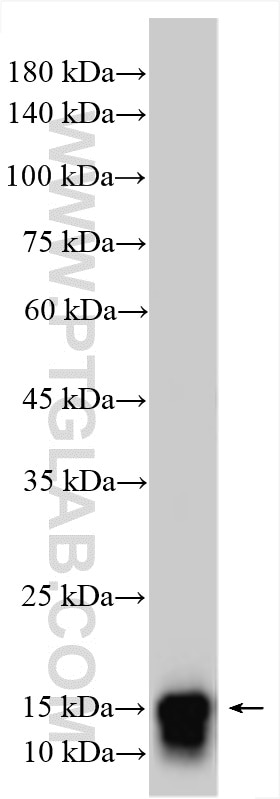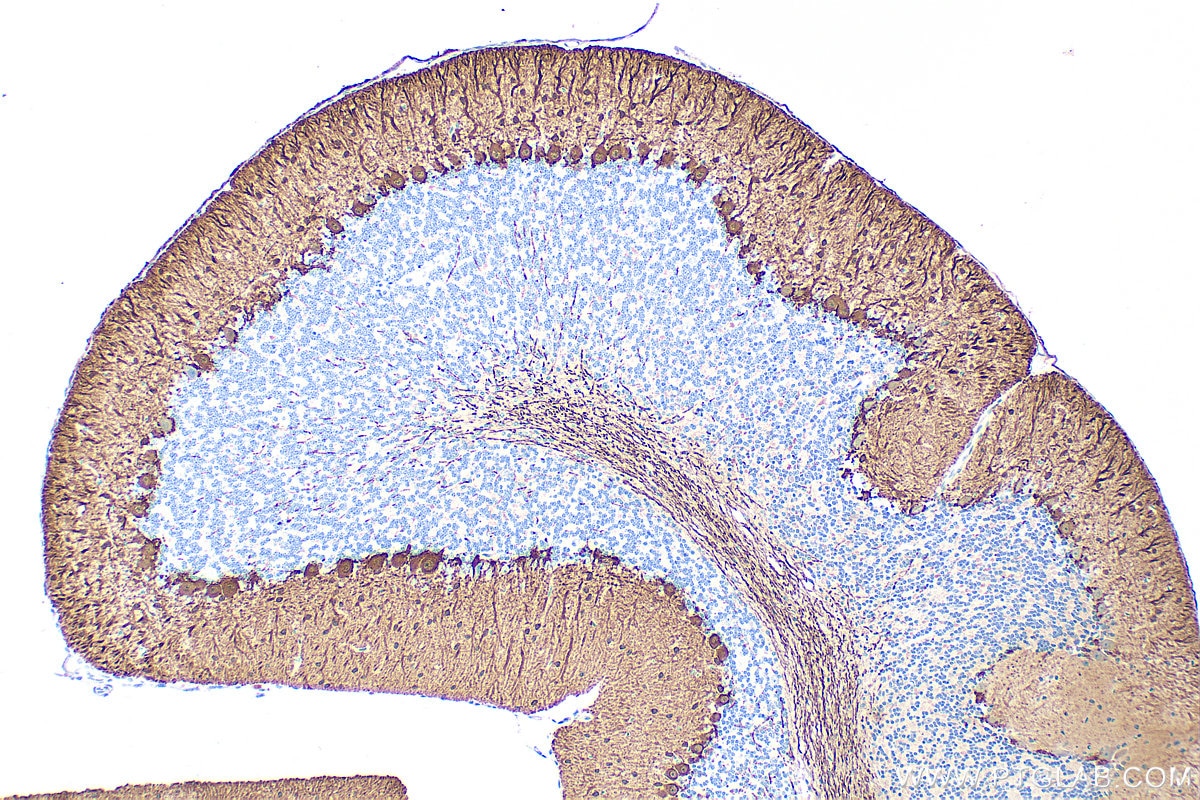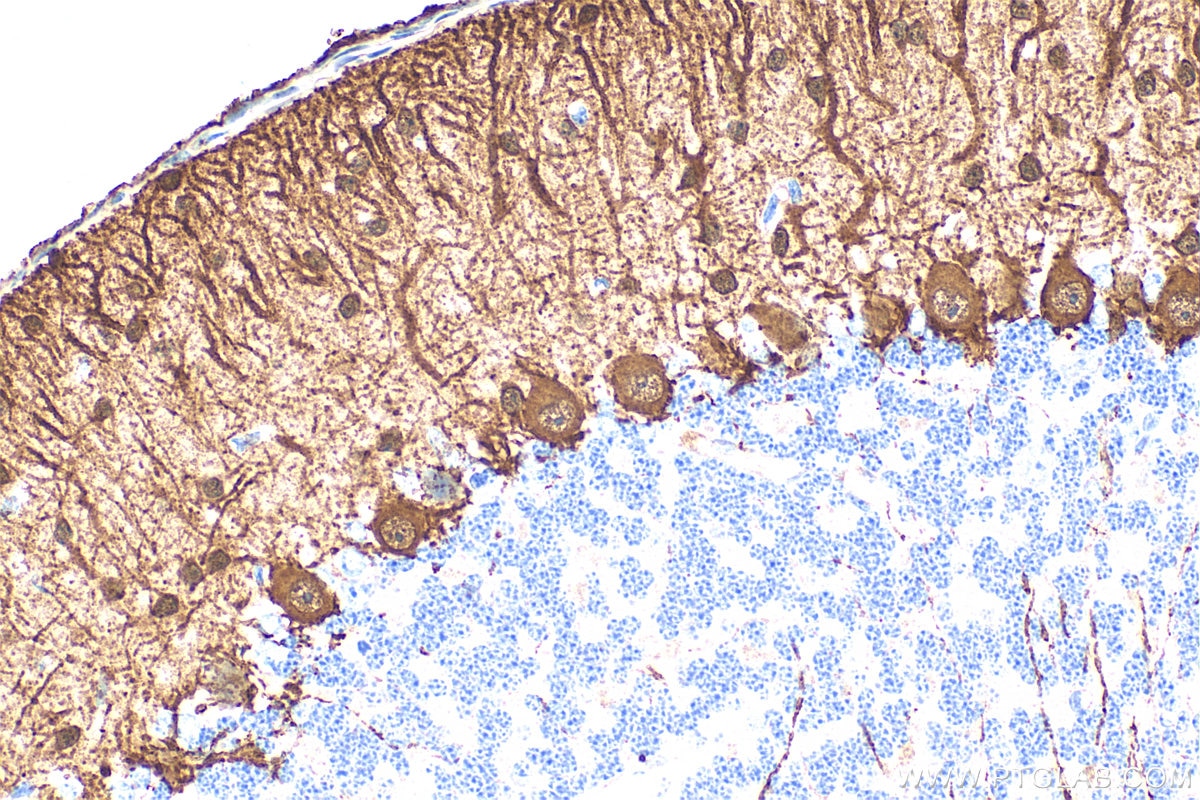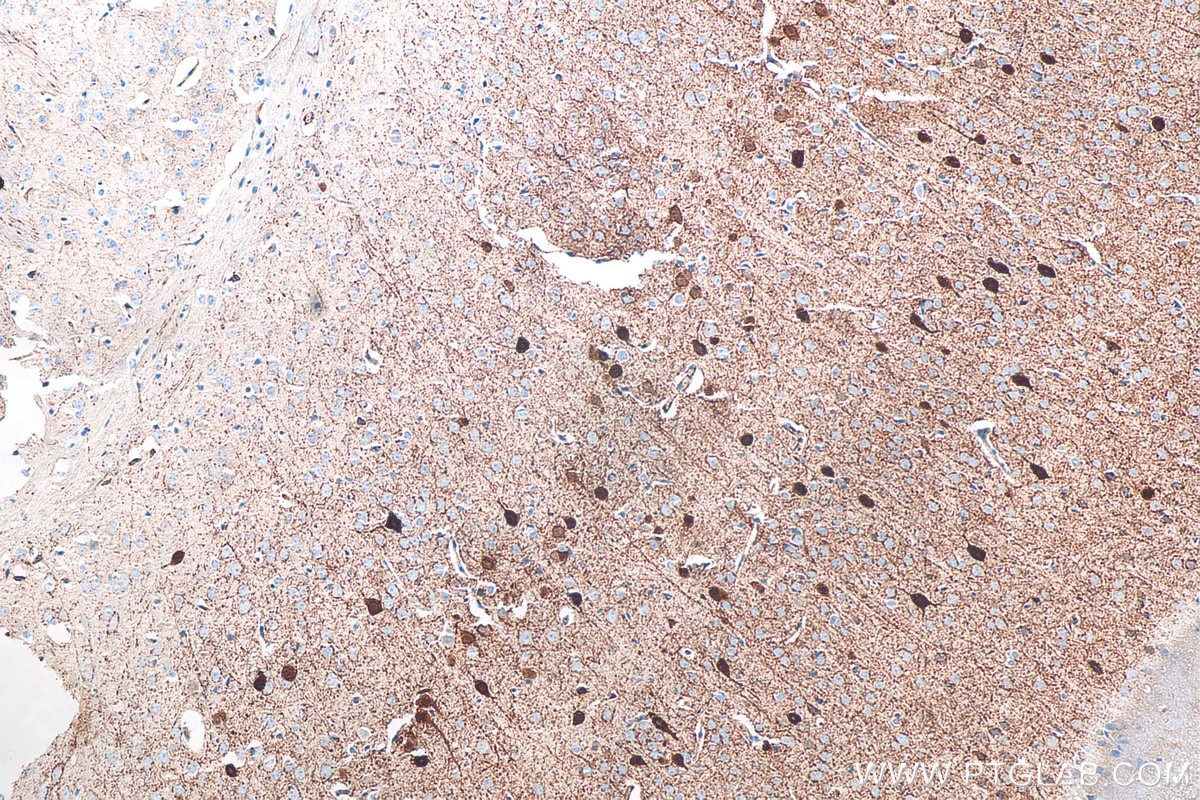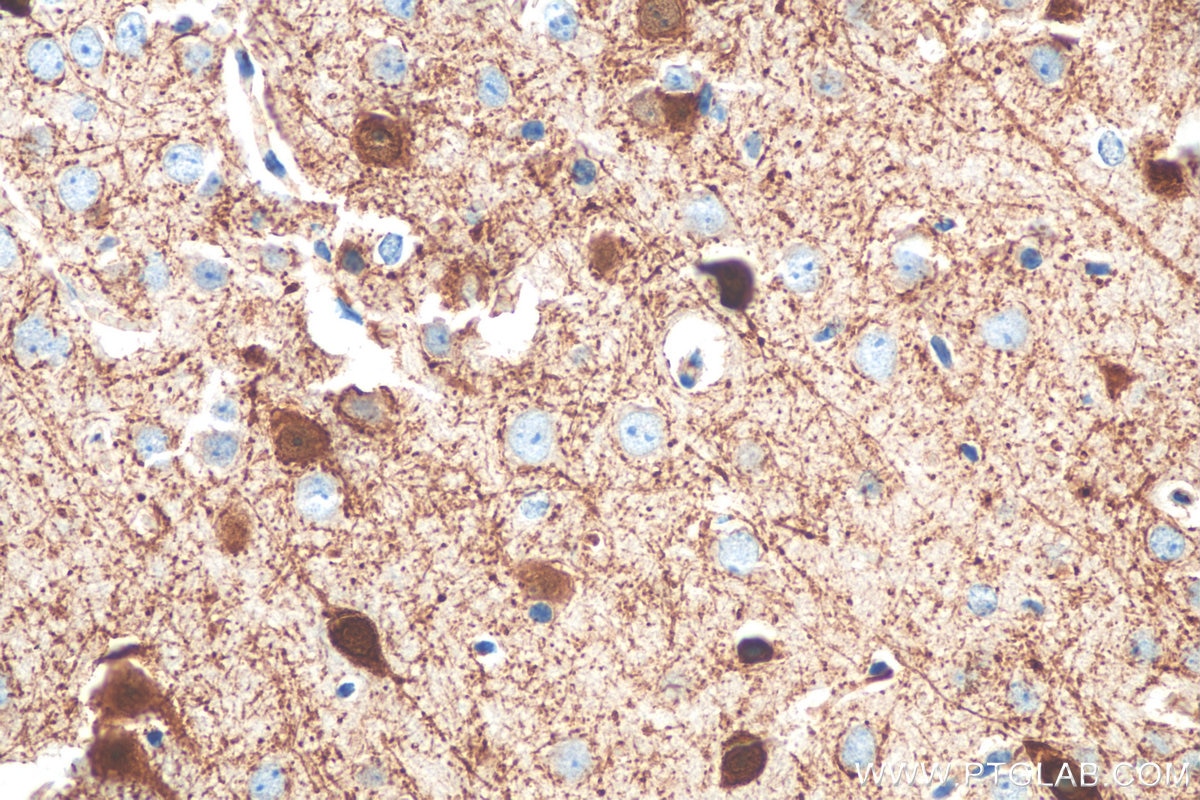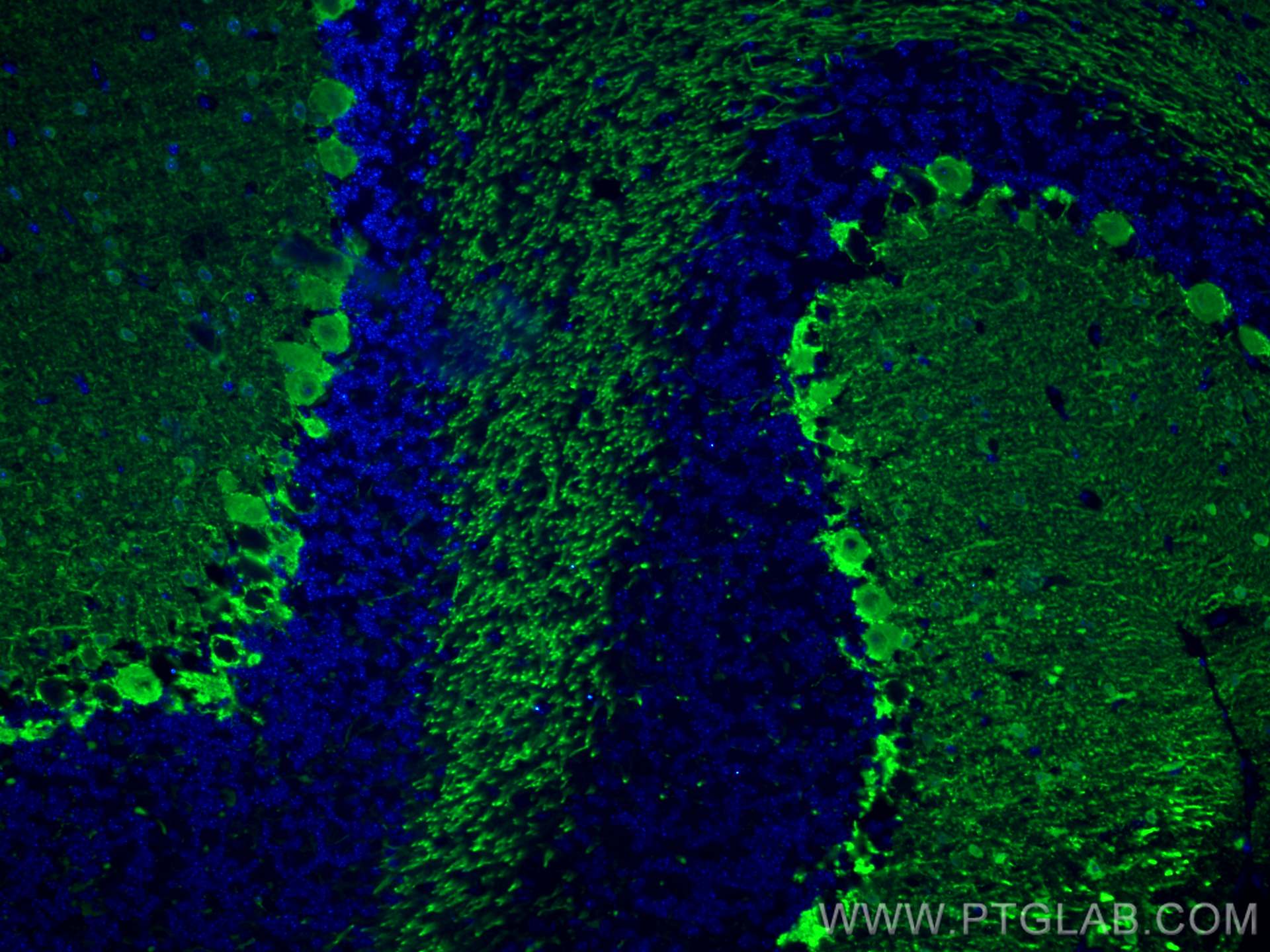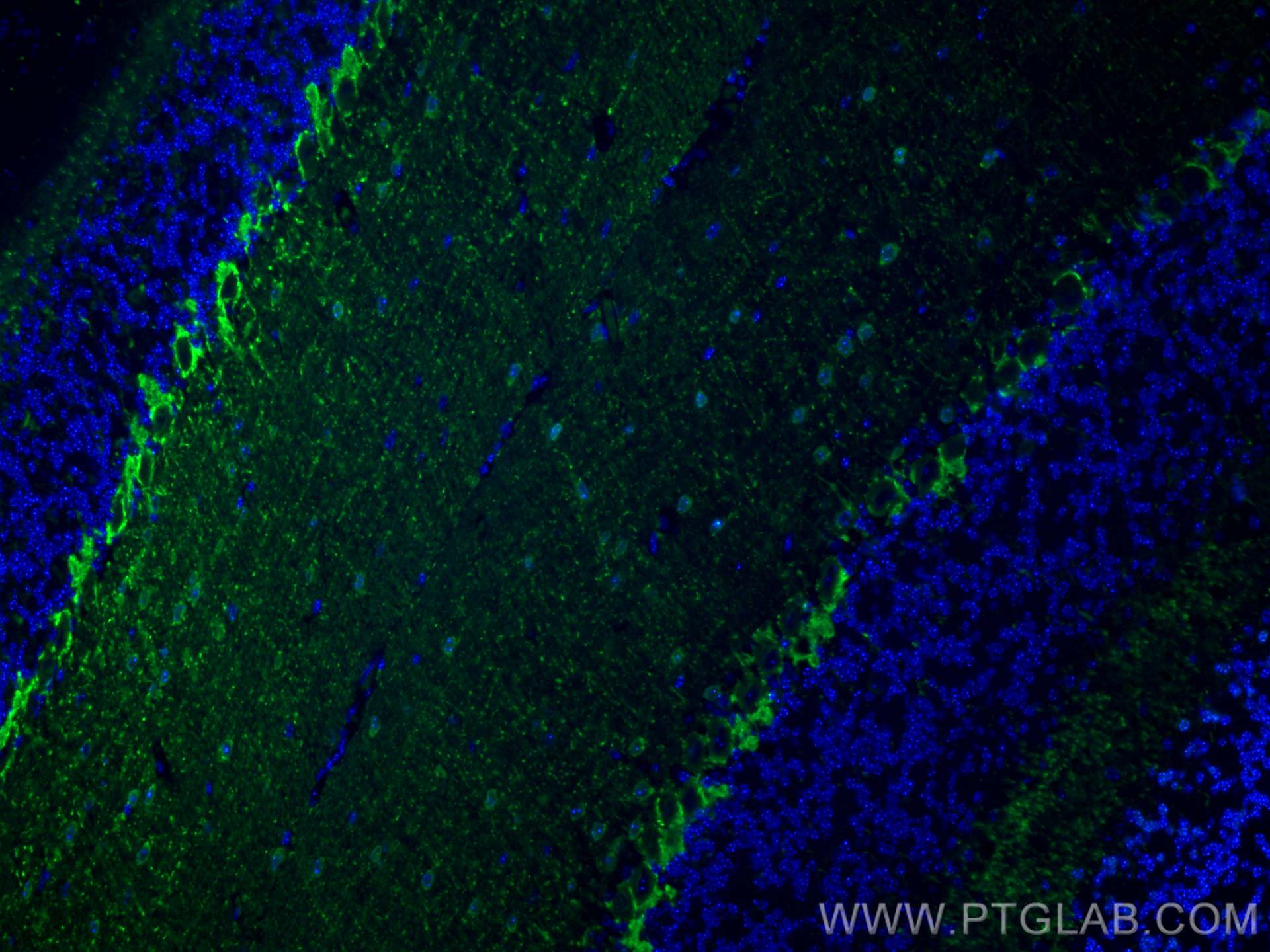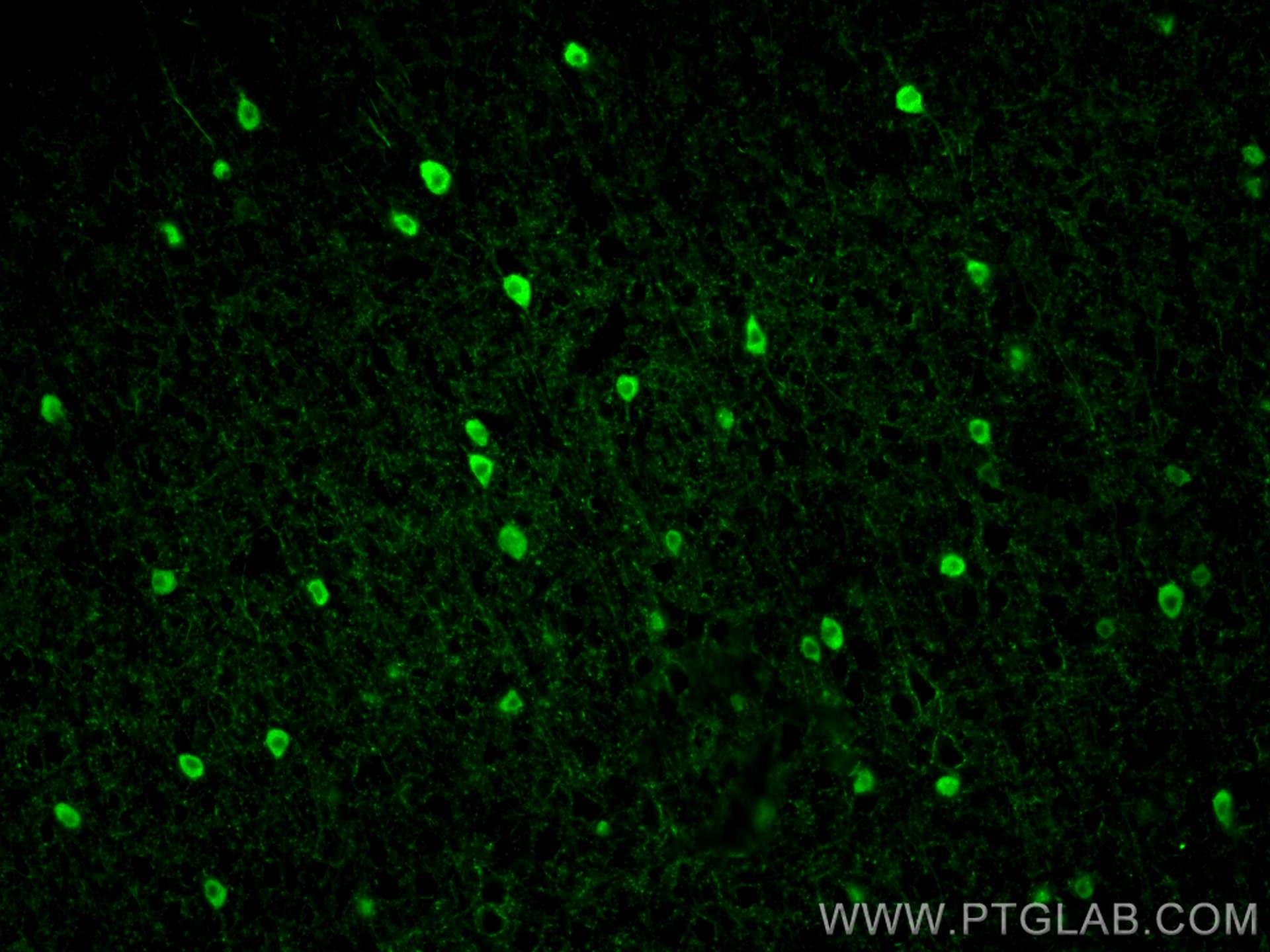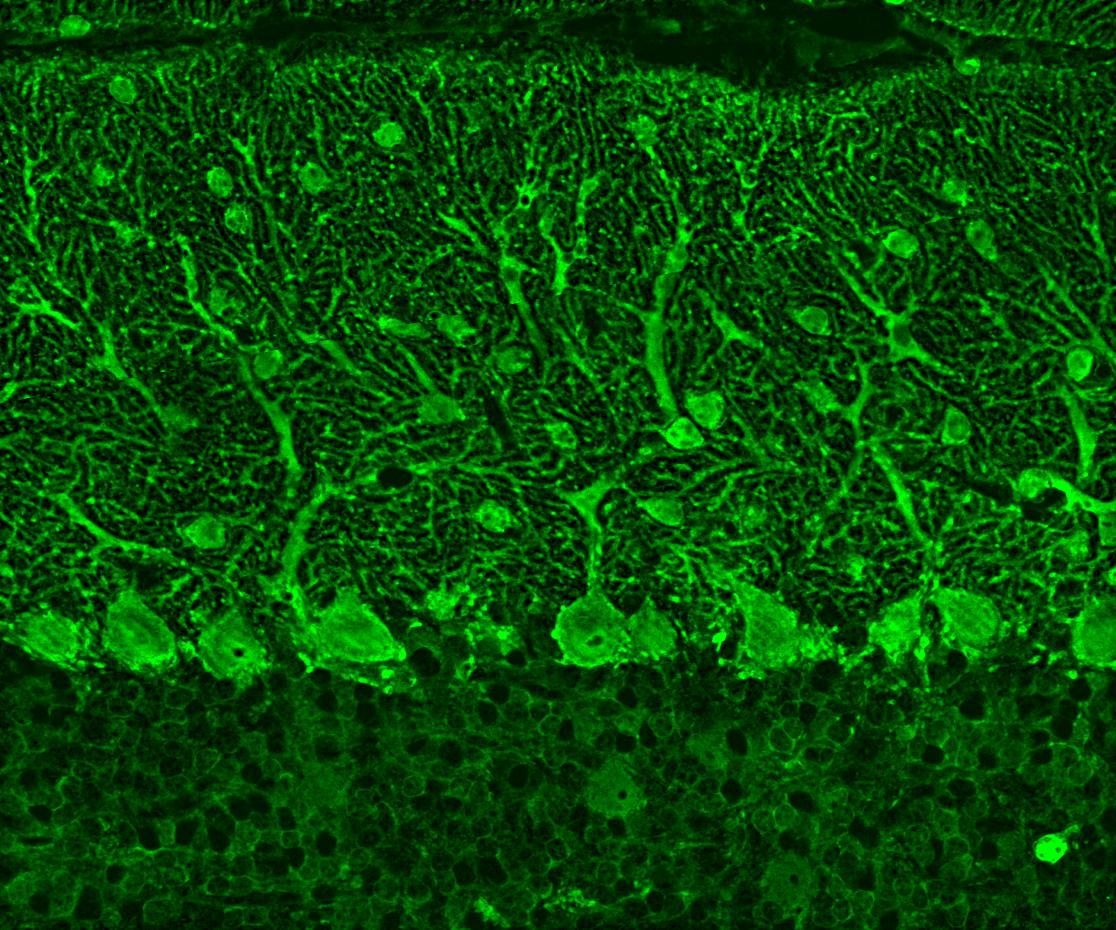Tested Applications
| Positive WB detected in | mouse brain tissue, rat brain tissue |
| Positive IHC detected in | mouse cerebellum tissue, mouse brain tissue, rat cerebellum tissue Note: suggested antigen retrieval with TE buffer pH 9.0; (*) Alternatively, antigen retrieval may be performed with citrate buffer pH 6.0 |
| Positive IF-P detected in | mouse cerebellum tissue, mouse brain tissue |
Recommended dilution
| Application | Dilution |
|---|---|
| Western Blot (WB) | WB : 1:500-1:2000 |
| Immunohistochemistry (IHC) | IHC : 1:500-1:2000 |
| Immunofluorescence (IF)-P | IF-P : 1:50-1:500 |
| It is recommended that this reagent should be titrated in each testing system to obtain optimal results. | |
| Sample-dependent, Check data in validation data gallery. | |
Published Applications
| WB | See 3 publications below |
| IHC | See 2 publications below |
| IF | See 4 publications below |
Product Information
29312-1-AP targets Parvalbumin in WB, IHC, IF-P, ELISA applications and shows reactivity with human, mouse, rat samples.
| Tested Reactivity | human, mouse, rat |
| Cited Reactivity | mouse, rat |
| Host / Isotype | Rabbit / IgG |
| Class | Polyclonal |
| Type | Antibody |
| Immunogen | Parvalbumin fusion protein Ag30189 Predict reactive species |
| Full Name | parvalbumin |
| Calculated Molecular Weight | 12 kDa |
| Observed Molecular Weight | 15 kDa |
| GenBank Accession Number | NM_002854 |
| Gene Symbol | Parvalbumin |
| Gene ID (NCBI) | 5816 |
| RRID | AB_2918280 |
| Conjugate | Unconjugated |
| Form | Liquid |
| Purification Method | Antigen affinity purification |
| UNIPROT ID | P20472 |
| Storage Buffer | PBS with 0.02% sodium azide and 50% glycerol, pH 7.3. |
| Storage Conditions | Store at -20°C. Stable for one year after shipment. Aliquoting is unnecessary for -20oC storage. 20ul sizes contain 0.1% BSA. |
Background Information
PVALB is a high affinity calcium ion-binding protein that is structurally and functionally similar to calmodulin and troponin C. PVALB is expressed in high levels only in fast-contracting muscles and at lower levels in brain and several endocrine tissues. It is thought to be involved in muscle relaxation. Monomeric (12 kDa) and dimeric (24 kDa) forms, as well as trimeric Parvalbumin (38 kDa), have been described in a literature (PMID: 19616851).
Protocols
| Product Specific Protocols | |
|---|---|
| WB protocol for Parvalbumin antibody 29312-1-AP | Download protocol |
| IHC protocol for Parvalbumin antibody 29312-1-AP | Download protocol |
| IF protocol for Parvalbumin antibody 29312-1-AP | Download protocol |
| Standard Protocols | |
|---|---|
| Click here to view our Standard Protocols |
Publications
| Species | Application | Title |
|---|---|---|
Front Mol Neurosci PGC-1α regulates critical period onset/closure, mediating cortical plasticity | ||
Physiol Res High-Intensity Interval Training Increases Osteoarthritis-Associated Pain-Sensitive Threshold Through Reduction of Perineuronal Nets of the Medial Prefrontal Cortex in Rats | ||
Transl Androl Urol Whole body vibration training promotes proprioceptive pathway for the treatment of stress urinary incontinence in rats | ||
Mol Neurobiol Oxidative Stress-mediated Loss of Hippocampal Parvalbumin Interneurons Contributes to Memory Precision Decline After Acute Sleep Deprivation | ||
Cell Rep Methods A versatile vessel casting method for fine mapping of vascular networks using a hydrogel-based lipophilic dye solution | ||
STAR Protoc Protocol for fine casting, imaging, and analysis of murine vascular networks with VALID |
Reviews
The reviews below have been submitted by verified Proteintech customers who received an incentive for providing their feedback.
FH Reyes (Verified Customer) (03-01-2024) | Parvalbumin (red) antibody worked in my human brain cortex sections, although it marks mostly the synaptic terminals more than the soma of the parvalbumin cells
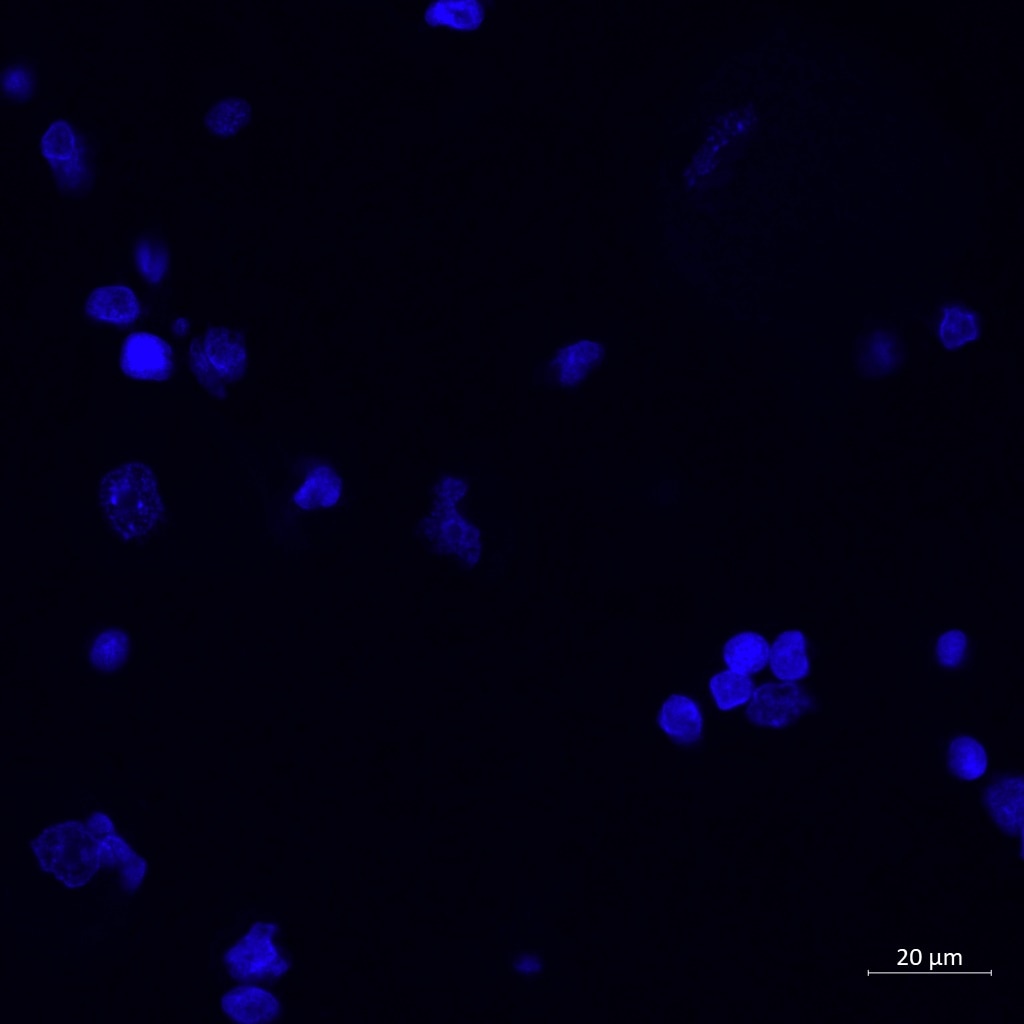 |
